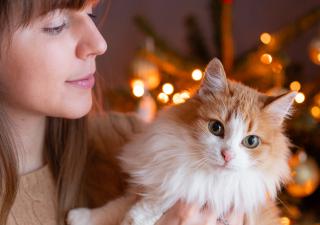
Some view declawing as a simple and long-term solution to protect their furniture. Others consider it useless animal cruelty, when simply getting a cat tree can do the trick. Beyond this ethical debate, this major medical procedure has long-term repercussions on your pet’s physical well-being and behaviour.
1. Declawing is not a manicure: It’s an amputation
Even though the term “declawing” seems innocuous—like nail clipping—it is actually a serious surgery. Since a cat’s claws are attached to the bones in the paws, the operation requires the removal of part of the bone. In humans, this is equivalent to cutting off the last knuckle at the end of each finger. The procedure involves putting the cat under general anaesthesia and requires several weeks of recovery.
2. A declawed cat is defenceless
Imagine for a moment that your declawed kitten slips outside through an open door. It would then be alone in an unknown environment, with no way to defend itself against predators and no possibility of climbing a tree or a fence to get to a safe height. Even if the declawing is only partial, cats cannot defend themselves as efficiently with just their back claws.
3. Declawing can impair movement
Since cat claws extend over the paws, they help maintain stability during movement. Declawing forces animals to walk directly on the cartilage of the last knuckles, which is much softer tissue to put their weight on. Cats must then adjust their natural gait to maintain balance and can develop back or joint pain since they have to use other muscles to compensate.
4. A declawed cat can become anxious or aggressive
Cats that feel threatened retain their instincts and will try to protect themselves. After declawing, vulnerable pets can develop behavioural problems such as anxiety and aggressiveness, or even do their business in inappropriate places. If they can no longer rely on their claws, cats can be more prone to biting. For humans, a cat bite presents a higher risk of infection or complications than a scratch because of the contact with saliva and the bacteria in the mouth.
5. Declawing can cause litter box problems
When the paws remain sensitive after the surgery, contact with litter can be extremely painful for a declawed cat or kitten. This is like being forced to walk barefoot on sharp pebbles after someone has stolen your shoes. When nature calls, your pet may prefer to do its business on softer surfaces, such as a carpet or a fabric sofa.
Declawing is not the only option
For most cats, it is enough to regularly trim nails, place a cat tree near furniture, and encourage your pet to use it. Talk to your veterinarian or visit your local pet store to find out how
Tips & Tricks
- Here are some tips to ensure your guests know how to interact with your dog during the Holiday season.
- Here are some tips to ensure a more pleasant stay for your friends and family with cat allergies.
- Do you know what pet insurance can cover? Here’s how it works.
- Contrary to dogs, cats have a profound hatred of costumes. Here’s why.
Products
- Zentonil®, to help support the cognitive function of aging pets, will help when your pet's liver is compromised…









